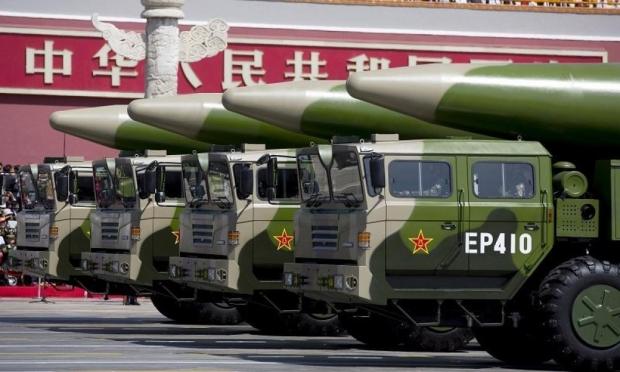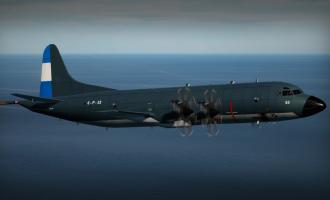China has joined Russia and the United States in the “hypersonic” missile club, the latest range of missiles that can render the traditional inter-continental ballistic missile technology obsolete. The west is now raising its eyebrows over a slew of new missile systems that have suddenly propped up China’s militarization program.
The Americans believe, with no confirmation forthcoming from Beijing, that China has equipped one or even two brigades of the People’s Liberation Army Rocket Force (PLARF), the service responsible for China’s conventional and nuclear missiles, with hypersonic missiles in the last one year.
A defense publication says 11 new PLARF brigades have come up in recent years, “at least eight of which were equipped with the latest missiles, including the DF-31 (the PLA’s first road-mobile ICBM), the CJ-10 (its first land-attack cruise missile), and the DF-16 SRBM, as well as the improved DF-21C”.
An American defense news website, Defense One, has reported in late March: “These new systems include the intermediate-range DF-26 ballistic missile, DF-31AG and DF-41
intercontinental ballistic missiles, CJ-100 cruise missile, and DF-17 hypersonic glide vehicle.
A new nuclear-armed DF-21 variant, speculatively referred to as the DF-21E, may have also been deployed but has not yet been officially unveiled.”
These missiles have a range between 1800 km to 11000 km. That means the Chinese missile arc can cover everything from Taiwan to the South China Sea, to Japan and Australia, the entire Pacific and Indian Ocean rim and the United States.
The PLARF is said to have raised 10 new brigades in the last three years and deployed in the central, eastern, north-eastern and south-eastern Chinese provinces and are equipped with the latest missiles Chinese technology can produce.
Maximum number of PLARF brigades are equipped with the DF-26 IRBM with a range of 4,000 km, thought be able to strike primarily ground and naval targets. China reportedly owns around 200 DF-26 launchers already even as it makes new ones.
This missile is unique because of “its ability to deliver nuclear or conventional warheads” and at least “one brigade is known to train for both missions”.
The focus of the west is on China’s hypersonic missile program. “The PLARF’s newest ICBM, the DF-41, was revealed in 2019. No brigades have been confirmed to have received this system, although the 644 Brigade located in Hanzhong, Shaanxi Province is strongly suspected to be the first.”
The DefenseNews website’s latest report quotes US government sources as saying that “China carried out several tests of HGVs, including the DF-17, since 2014….the first system of its type known to be operational in the world…In addition, China is also believed to be developing an air-launched HGV, with a video briefly posted on Chinese social media in October last year showin a PLARF Xi’an H-6N Bomber landing at an air base carrying whatappeared to be a boost-glide HGV…”
Defense experts write: “China is crash-testing its DF-17 Hypersonic Glide Vehicle…designed to piggyback on top of a conventional ballistic missile and has the ability to hit any area in the South China Sea within 13 minutes.” This was shown at a public parade in 2019 itself.
China is also reported to be building at least 16 underground silos in the Inner Mongolia region to slot its most powerful ICBMs and the DF-41 and DF-31AG hypersonic missile that have a range of 10,000km to 14,000 km. These have the ability to reach the US territory. The DF-41 missiles can carry multiple nuclear warheads and can be fired from a silo-based
platform or a road- or rail-based mobile launcher.
Popular Science magazine has revealed that “two of the (PLARF) brigades are equipped with dual-use weapons systems (DF-26, DF-21C) that have both nuclear and conventional war applications, with the others likely equipped with the DF-41, DF-31AG, and DF-17, all of which are nuclear or nuclear-capable”.
One of the highly guarded Chinese systems is said to be the “the CJ-100 ground-launched cruise missile…(that) may be able to hit land and sea targets out to about 2,000 kilometers.
Some evidence suggests that the first unit to deploy the CJ-100 will be the 656 Brigade, whose location in eastern China on the Shandong Peninsula would allow it to target much of
Japan. If it has an anti-ship function, it could also hit ships in the East China Sea and beyond the first island chain”.
China’s official policy says it will not be the first to use nuclear weapons in the event of a conflict. But it says it reserves the right for maintaining nuclear deterrence and the ability to respond to a nuclear attack. In its white paper on defence in 2019, China declared that the “strategic requirements” of the PLARF include “enhancing…nuclear deterrence and counterattack [and] strengthening intermediate and long-range precision strike forces”.
While its missile programs are tuned to this policy, what foxes the western experts is the Chinese ambiguity over nuclear and conventional weaponry. Unlike the western powers, China has not separated its nuclear and non-nuclear weapons systems. Moreover, it is now said to be equipping PLARF brigades with dual use systems. That, precisely, is the cause for west’s worry, apart from the geographical arc of weapons placement.

Κόσμος
Ενημερώθηκε στις:
China's missile induction spree raises global defense stakes

Ακολουθήστε το Πενταπόσταγμα στο Google news













